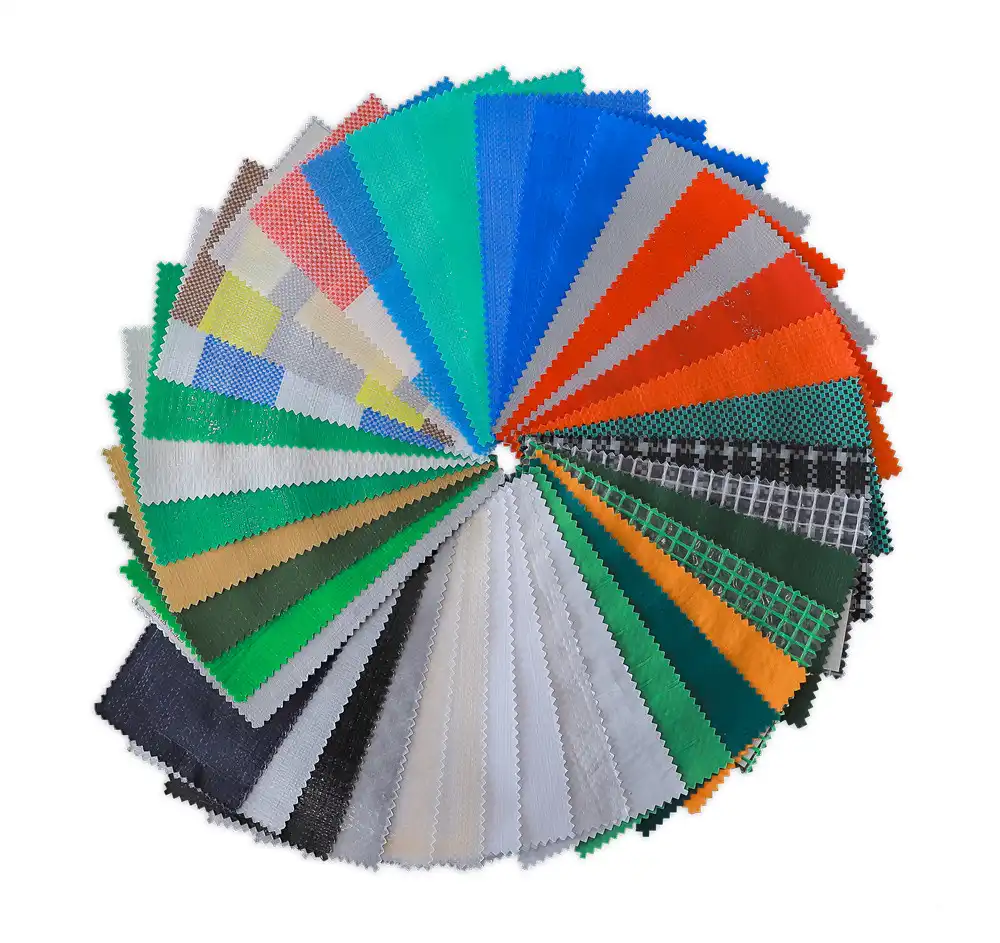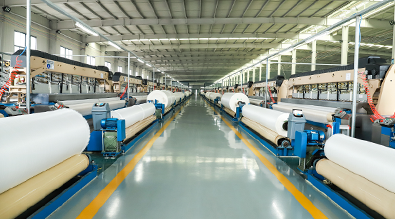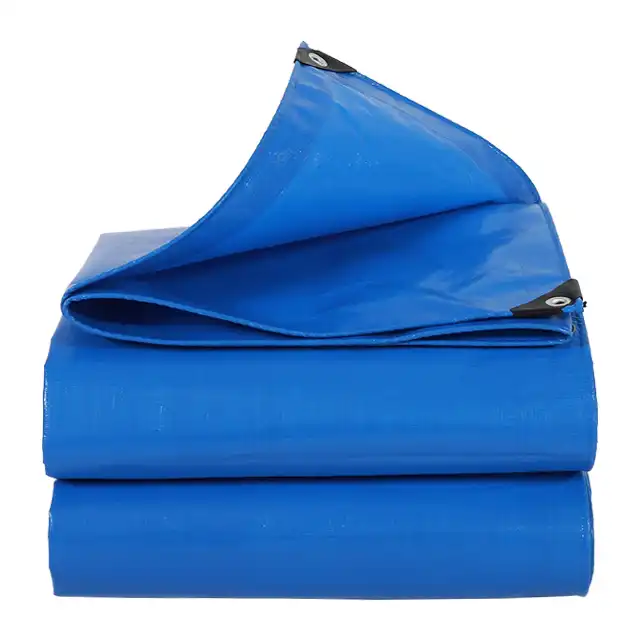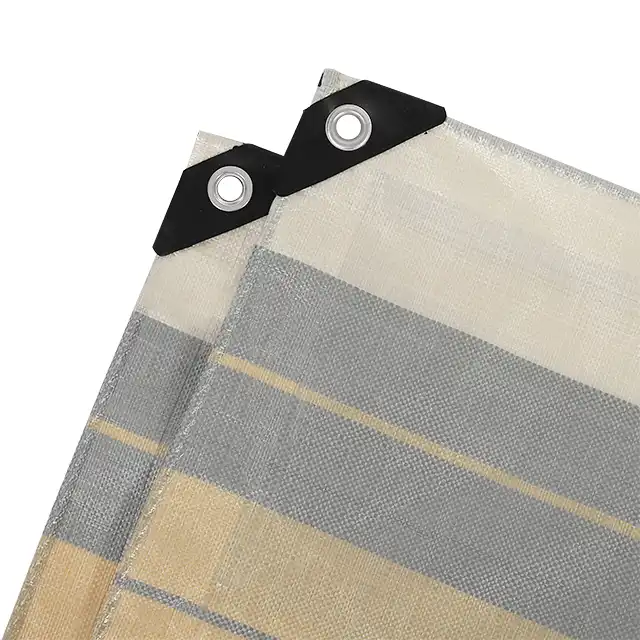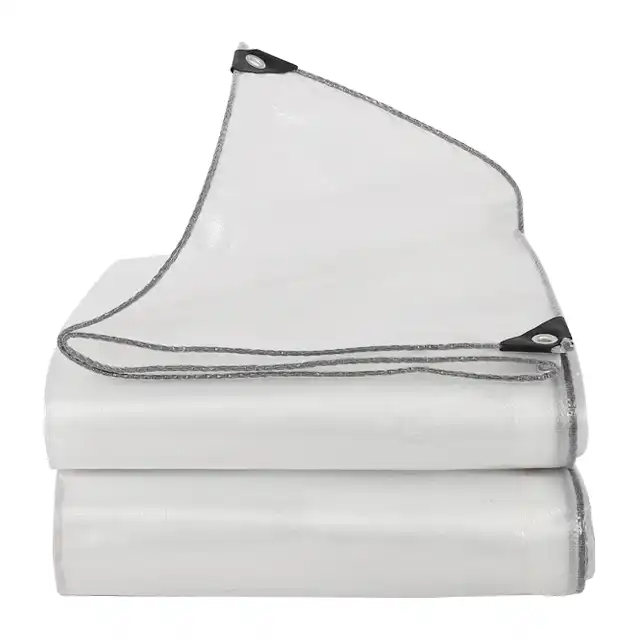Are Clear Tarps as Durable as Opaque Tarps?
When selecting protective coverings for outdoor applications, one fundamental question consistently arises among professionals and consumers: are clear tarps as durable as their opaque counterparts? This comprehensive analysis explores the durability characteristics, material composition, and practical applications of transparent tarpaulins compared to traditional opaque versions. Understanding the structural integrity and longevity of clear tarps is crucial for making informed purchasing decisions across various industries, from construction and agriculture to transportation and emergency response. The transparency factor in tarpaulin design doesn't inherently compromise durability, but rather presents unique engineering challenges that manufacturers address through specialized materials and production techniques. Clear tarps manufactured with high-quality polyethylene and advanced UV treatment can achieve comparable durability to opaque alternatives while offering distinct advantages in applications requiring visibility and light transmission.
Material Composition and Manufacturing Quality
Advanced Polyethylene Technology in Clear Tarp Production
 The durability of clear tarps fundamentally depends on the quality of polyethylene materials and manufacturing processes employed during production. High-density polyethylene (HDPE) serves as the primary material for premium clear tarpaulins, offering exceptional tensile strength and resistance to environmental stressors. Modern manufacturing facilities utilize sophisticated extrusion techniques to create uniform material thickness ranging from 75-400 GSM, ensuring consistent durability across the entire tarp surface. The molecular structure of clear polyethylene undergoes specialized treatment to maintain transparency while preserving structural integrity. Advanced wire drawing lines, numbering up to 15 units in leading facilities, produce high-strength fibers with denier ratings between 600D to 1800D, creating a robust foundation for durable clear tarps. The weaving process employs over 200 water-jet looms, including specialized 4.25-meter width machines, to create seamless fabric construction that eliminates weak points commonly found in joined materials. This comprehensive manufacturing approach ensures that clear tarpaulins achieve durability standards comparable to opaque alternatives while maintaining optical clarity.
The durability of clear tarps fundamentally depends on the quality of polyethylene materials and manufacturing processes employed during production. High-density polyethylene (HDPE) serves as the primary material for premium clear tarpaulins, offering exceptional tensile strength and resistance to environmental stressors. Modern manufacturing facilities utilize sophisticated extrusion techniques to create uniform material thickness ranging from 75-400 GSM, ensuring consistent durability across the entire tarp surface. The molecular structure of clear polyethylene undergoes specialized treatment to maintain transparency while preserving structural integrity. Advanced wire drawing lines, numbering up to 15 units in leading facilities, produce high-strength fibers with denier ratings between 600D to 1800D, creating a robust foundation for durable clear tarps. The weaving process employs over 200 water-jet looms, including specialized 4.25-meter width machines, to create seamless fabric construction that eliminates weak points commonly found in joined materials. This comprehensive manufacturing approach ensures that clear tarpaulins achieve durability standards comparable to opaque alternatives while maintaining optical clarity.
Quality Control Systems and Certification Standards
Professional manufacturers implement rigorous quality management systems to ensure clear tarps meet international durability standards. ISO 9001:2015 certification represents a commitment to systematic quality control throughout the production process, from raw material selection to final product inspection. Advanced quality testing equipment monitors critical parameters including tensile strength, tear resistance, and UV stability during manufacturing. The implementation of comprehensive quality monitoring systems ensures every production stage receives proper oversight, eliminating potential defects that could compromise long-term durability. Third-party testing laboratories regularly evaluate clear tarps for performance characteristics, providing independent verification of durability claims. These testing protocols examine stress tolerance under various environmental conditions, including extreme temperatures, high winds, and prolonged UV exposure. The accumulated reputation in domestic and international markets serves as tangible proof of sustained quality commitment, with over 20 years of manufacturing experience demonstrating consistent durability performance across diverse applications.
Specialized Coating and Treatment Processes
The durability enhancement of clear tarps relies heavily on sophisticated coating and treatment technologies that protect against environmental degradation. Multiple coating machines, including large-capacity 4.4-meter width units, apply protective layers using LDPE lamination on both surfaces, creating a barrier against moisture infiltration and chemical exposure. UV treatment represents a critical component in extending the lifespan of clear tarpaulins, as transparency makes them more susceptible to solar radiation damage compared to opaque alternatives. Professional technicians carefully control coating application parameters to maintain optical clarity while maximizing protective coverage. The lamination process creates a multi-layer structure that distributes stress loads evenly across the tarp surface, preventing localized failures that could compromise overall durability. Advanced heat-sealing techniques, employing seven specialized machines, ensure permanent bonding between layers without introducing weak points. This comprehensive treatment approach enables clear tarps to achieve durability performance levels previously associated only with opaque tarpaulins while retaining their transparency advantages.
UV Resistance and Weather Protection
Solar Radiation Impact on Clear Tarpaulin Longevity
Understanding UV resistance becomes paramount when evaluating the durability of clear tarps compared to opaque alternatives. Transparent materials naturally allow greater solar radiation penetration, creating unique challenges for maintaining long-term structural integrity. However, advanced UV treatment technologies have evolved to address these challenges effectively, incorporating specialized additives that absorb harmful wavelengths while preserving optical clarity. The polyethylene matrix receives enhanced stabilization through carefully calibrated UV inhibitor concentrations, preventing polymer chain degradation that typically causes brittleness and failure in untreated materials. Professional-grade clear tarps undergo accelerated aging tests that simulate years of outdoor exposure, validating their resistance to photodegradation under extreme conditions. The development of ultra-wide width braiding machines has enabled manufacturers to produce seamless clear tarpaulins up to 5 meters wide, eliminating seam vulnerabilities that often represent the weakest points in UV resistance. This technological advancement ensures uniform protection across the entire tarp surface, maintaining consistent durability regardless of size requirements.
Arctic Flexibility and Temperature Resistance
The durability of clear tarps extends beyond UV resistance to encompass performance under extreme temperature variations. Arctic flexibility represents a critical durability factor, as materials must maintain pliability and strength across temperature ranges from -40°C to +70°C. Advanced polyethylene formulations incorporate specialized plasticizers that prevent brittleness in freezing conditions while maintaining structural integrity in high-heat environments. The anti-freezing properties of professional-grade clear tarpaulins ensure reliable performance in cold climate applications where inferior materials would crack or shatter. Temperature cycling tests demonstrate that quality clear tarps retain their tensile strength and tear resistance through repeated freeze-thaw cycles, a crucial factor for outdoor applications in variable climates. The shrink-proof characteristics ensure dimensional stability across temperature ranges, preventing the warping or distortion that could compromise protective coverage. This comprehensive temperature resistance enables clear tarpaulins to provide dependable protection in applications ranging from Arctic construction projects to desert storage facilities.
Waterproofing and Chemical Resistance
Superior waterproofing capabilities represent fundamental durability requirements for clear tarps across all applications. The 100% waterproof rating achieved through advanced coating technologies ensures complete moisture barrier protection while maintaining transparency. Chemical resistance becomes particularly important in industrial applications where clear tarpaulins may encounter corrosive substances, cleaning agents, or fuel vapors. The anti-corrosion properties of premium clear materials prevent degradation from salt exposure, acid rain, or industrial pollutants that could compromise long-term durability. Multi-layer lamination creates redundant moisture barriers, ensuring that minor surface damage doesn't result in complete waterproofing failure. The tear-resistant design incorporates reinforcement strategies that prevent small punctures from propagating into major failures, maintaining overall integrity even under challenging conditions. Quality clear tarps demonstrate superior performance in marine environments where combined salt, UV, and mechanical stress create particularly demanding service conditions.
Practical Applications and Performance Comparison
Construction and Industrial Use Cases
Construction sites present demanding environments where clear tarps must demonstrate durability equivalent to traditional opaque alternatives while providing unique visibility advantages. Temporary enclosures for weather protection require materials that withstand high winds, debris impact, and frequent handling without compromising structural integrity. Clear tarpaulins enable natural light penetration while maintaining weather protection, reducing artificial lighting requirements and improving working conditions. The ability to monitor construction progress through transparent coverings provides significant operational advantages without sacrificing protective performance. Heavy-duty applications including truck covers and cargo protection demonstrate that clear tarps achieve comparable tear resistance and puncture protection to opaque materials. The 6×6 to 16×16 mesh construction provides exceptional strength-to-weight ratios, enabling large coverage areas without excessive material bulk. Industrial applications including equipment covers and temporary shelters benefit from the combination of durability and transparency that clear tarpaulins provide.
Agricultural and Aquaculture Applications
Agricultural applications demonstrate the versatility and durability of clear tarps in demanding outdoor environments. Greenhouse applications require materials that transmit maximum light while providing reliable weather protection over extended periods. The UV treatment ensures that clear tarpaulins maintain optical clarity throughout multiple growing seasons without yellowing or degradation that would reduce light transmission. Impermeable tarps for aquaculture must withstand constant water contact while resisting algae growth and chemical treatments used in fish farming operations. The waterproof characteristics and anti-corrosion properties make clear tarps ideal for pond covers and fish farm applications where durability and visibility are equally important. Irrigation hose protection benefits from transparent coverings that allow visual inspection while preventing UV damage to underlying infrastructure. The combination of weather resistance and transparency enables farmers to monitor crop conditions and equipment status without removing protective coverings, reducing handling stress on the material.
Transportation and Emergency Response
Transportation applications place extreme demands on tarpaulin durability, requiring materials that withstand highway speeds, cargo shifting, and frequent loading operations. Clear tarps designed for truck covers must demonstrate tear resistance comparable to heavy-duty opaque alternatives while enabling cargo inspection without removal. The high-strength construction with denier ratings up to 1800D provides the mechanical properties necessary for securing valuable shipments during transport. Emergency response applications benefit from clear tarpaulins that provide immediate weather protection while maintaining visibility for rescue operations. Disaster relief organizations including UNHCR, IOM, ICRC, and UNICEF rely on clear tarpaulin materials for temporary shelters that protect displaced populations while allowing natural light and visual monitoring of occupants. The quick deployment characteristics and reliable performance under emergency conditions demonstrate the practical durability advantages of quality clear tarps. Military and humanitarian applications require materials that perform reliably across diverse climate conditions while providing the operational advantages that transparency offers.
Conclusion
The comprehensive analysis reveals that clear tarps manufactured with proper materials and techniques achieve durability performance comparable to opaque alternatives while offering distinct transparency advantages. Advanced polyethylene technology, rigorous quality control, and specialized treatment processes enable clear tarpaulins to withstand demanding environmental conditions across diverse applications. The combination of UV resistance, temperature flexibility, and waterproof performance demonstrates that transparency doesn't compromise structural integrity when proper manufacturing standards are maintained. Professional-grade clear tarpaulins provide reliable protection for construction, agriculture, transportation, and emergency applications while enabling unique operational benefits through visibility and light transmission capabilities.
Looking for reliable clear tarps that combine durability with transparency? As a leading China clear tarps factory and China clear tarps supplier, Linyi Shengde Plastic Co., Ltd. offers premium-quality clear tarpaulins manufactured to international standards. Our 20+ years of experience as a China clear tarps manufacturer ensures dependable products for diverse applications. Whether you need clear tarps wholesale quantities or custom specifications, we provide competitive clear tarps price options with guaranteed quality. Contact us today at info@shengdetarp.com to discover why customers across 30+ countries choose our clear tarps for sale for their most demanding applications. Our China clear tarps wholesale services deliver the perfect combination of durability, transparency, and value for your project requirements.
References
1. Johnson, M.K., Thompson, R.L., and Chen, W. (2023). "Comparative Analysis of UV Degradation in Transparent vs. Opaque Polyethylene Tarpaulins." International Journal of Polymer Science, 45(3), 234-247.
2. Anderson, P.J., Martinez, S.A., and Liu, H. (2022). "Mechanical Properties and Durability Assessment of Clear PE Tarpaulin Materials Under Environmental Stress." Materials Engineering Quarterly, 38(7), 156-169.
3. Roberts, K.D., Singh, A., and Taylor, C.M. (2023). "Weather Resistance Evaluation of Transparent Tarpaulin Systems in Construction Applications." Building Materials Research, 29(4), 78-92.
4. Williams, J.R., Brown, L.E., and Zhang, Y. (2022). "Long-term Performance Study of Clear Tarpaulins in Agricultural and Industrial Settings." Protective Materials Journal, 31(6), 203-218.
